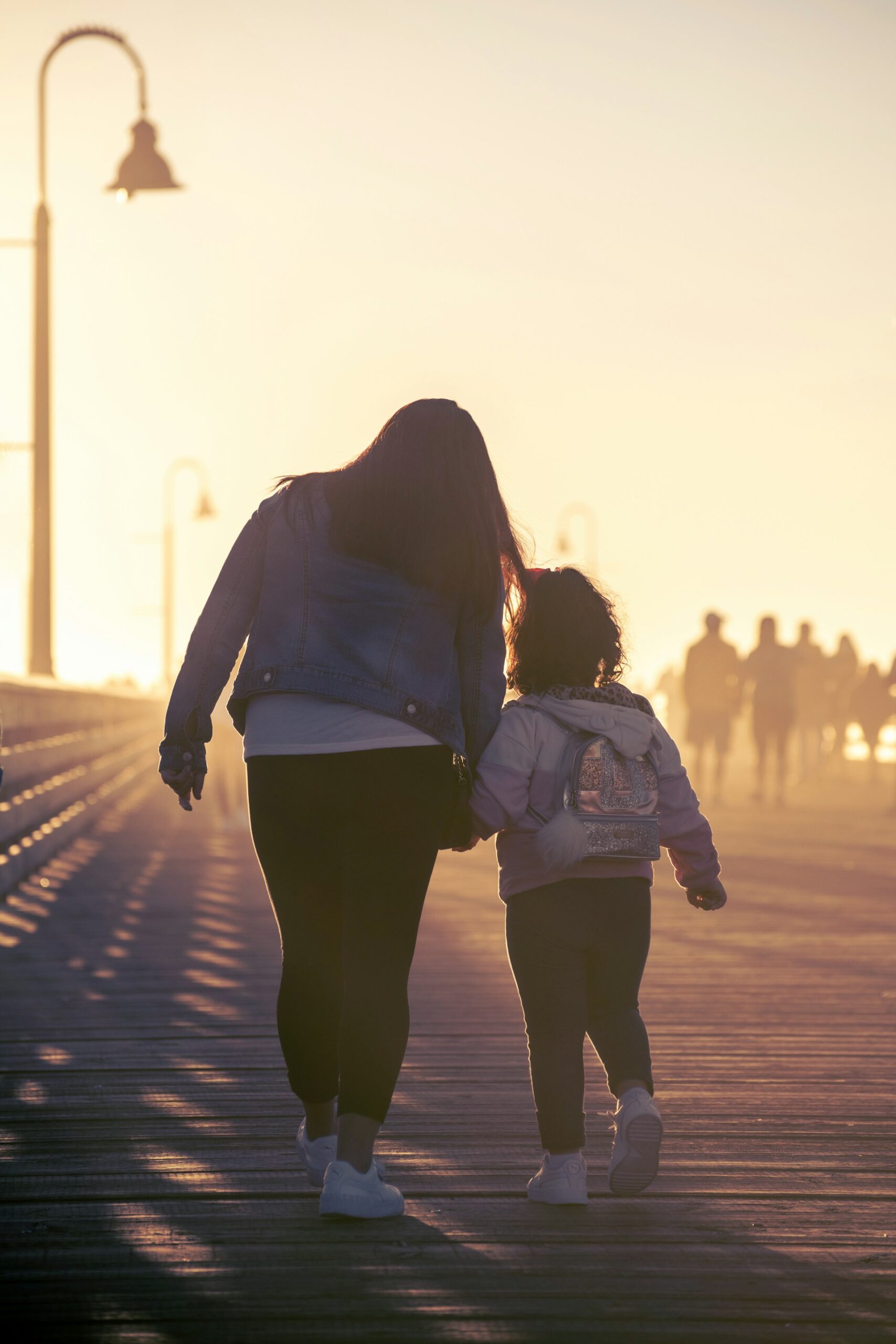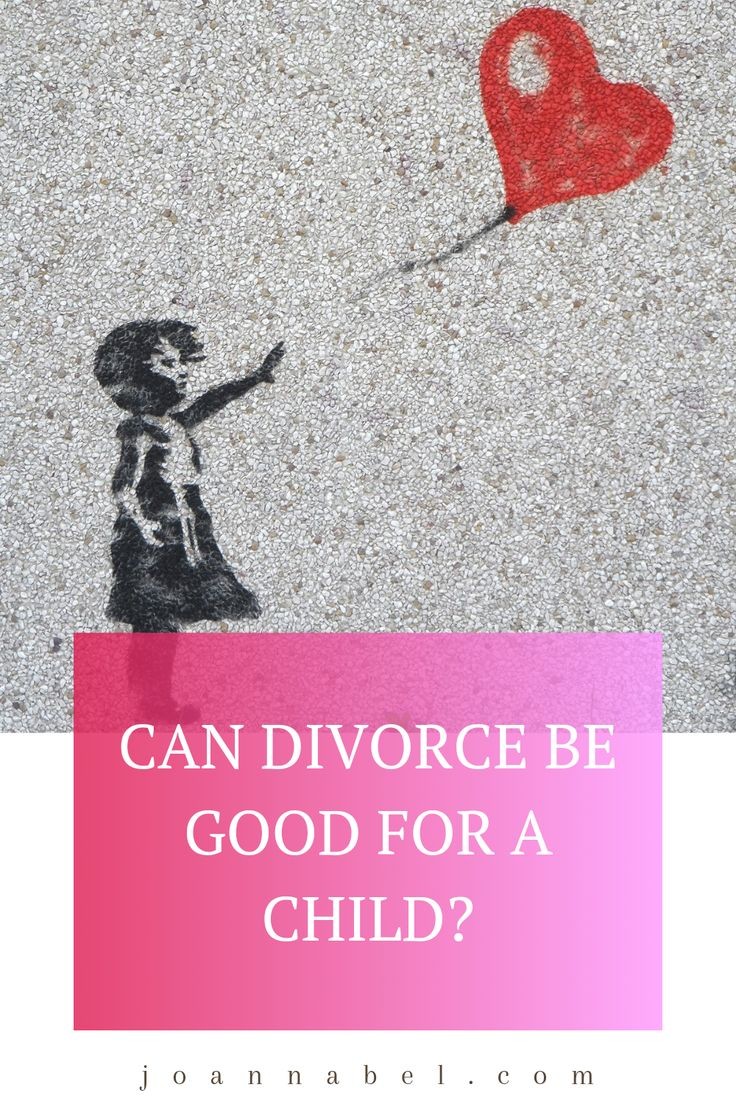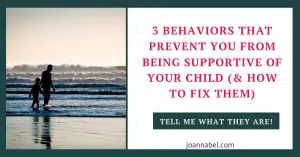Divorce is a challenging and impactful experience for any family, but its impact on children often raises the most concern. While it is commonly associated with negative outcomes, there are situations where the effects may be more nuanced than they first appear.

Can Divorce Be Good For A Child?
Let’s uncover whether divorce, under certain conditions, can be good or even a positive turning point for a child and their life.
Note: Although I am a Clinical Social Worker, engaging with this website does not establish a professional social worker-client relationship. The information provided here is for general purposes only and should not be considered professional advice. While we strive to ensure accuracy and reliability, this content is not a substitute for professional guidance. For specific concerns, issues, or situations, it is essential to consult a qualified professional and present your situation. Read the full Disclaimer here.
CAN DIVORCE BE GOOD FOR A CHILD?

Divorce is often seen as a negative, disruptive experience for children, and while it undeniably presents challenges, it doesn’t always have to leave a lasting scar. In fact, under the right circumstances, divorce can create opportunities for healthier relationships, more balanced family dynamics, and improved emotional well-being for everyone involved, including the child.
The truth is, staying in violent, a high-conflict, or emotionally draining marriage can sometimes do more harm than good for you and the child. When parents are constantly overwhelmed, emotionally unavailable, or consumed by unresolved issues, it’s challenging for them to provide the support and stability their child needs.
So when parents are deeply exhausted by ongoing issues in their partnership or by the family’s broader circumstances, it can make them less available to meet their child’s emotional, physical, and developmental needs. In these cases, divorce can create a reset. After separation, many parents find themselves able to organize their lives differently, creating a more stable and nurturing environment for their child.
And when the dust settles after a divorce, many families find that a new structure allows for better communication, more quality time, and a renewed focus on what matters most yout and your child’s well-being. If they’re able to establishing healthier co-parenting boundaries, parents can create a supportive and nurturing environment, even if they’re no longer together.
Of course, this doesn’t mean that divorce is easy or always the best solution. However, I’m sure like most parents, you’ve exhausted all other possibilities before considering a decision to divorce, and you’ve tried it all to save the relationship/keep the family together.
The impact on a child often depends on how the process is handled, how the parents communicate, and whether the child feels secure, heard, and valued during the transition. This is why it’s essential to explore the child’s unique perspective and consider their needs every step of the way.
A CHILD’S PERSPECTIVE ON DIVORCE AS A FACTOR
As I mentioned, even though divorce often comes with certain risks, it can sometimes be beneficial for children, particularly when it leads to better relationships with their parents and more quality time than they experienced before the separation. This is because adjusting to a new healthier routine post-divorce could allow parents to become more emotionally present.
However, it’s important to remember that what may feel unbearable or dysfunctional to you as a parent might not be perceived the same way by your child. Children have their own unique roles and therefore a unique perspectives within the family dynamic and of the family dynamic.
In other words, while the marriage may feel negative or harmful to you, your child might still see value in their family structure, even if it’s imperfect or dysfunctional.
This underscores the need to explore how your child feels about the family dynamic before and after divorce. Open and age-sensitive communication is crucial, as is creating a space where your child feels safe expressing their emotions, fears, and hopes.
If you discover just like many parents do, that kids would like their parents to reconcile, this doesn’t mean you have to change your decision. But what it does mean is that you need to set expectations to help your child integrate this life experience faster and easier.
Read: DIVORCE: WHAT IF A CHILD PREFERS ONE PARENT (HOW TO RESPOND).
HOW TO ENSURE DIVORCE ISN’T HARMFUL FOR YOUR CHILD
Even though divorce will create a certain amount of hurt for all family members since this is a loss for everyone, it’s a change, a big life event, and a transitional period in a family life cycle; divorce shouldn’t be harmful. This is especially important for children who are still developing, and the younger they are, the more risk there is that mishandling divorce will have a big impact on them and their lives in a negative way.
Having this in mind, you should do your best to create conditions in which a child isn’t harmed. Naturally, not everything will be under your control, but the majority of things could be. I’ll give you several guidelines to guide you on your way to a divorce that is safe for children.
- Open and honest communication with your child concerning divorce – Providing clarity and predictability while shielding them from unnecessary details helps your child process the changes in a healthy way.
- Avoid any actions aimed at harming, retaliating against, or undermining the other parent, their family, or your child – Prioritizing respectful communication with your ex-partner protects your child from emotional harm and fosters a sense of stability.
- Acknowledge and address emotional needs – Attending to both your and your child’s emotions ensures a stable environment and prevents emotional neglect during this transitional period.
- Understand legal rights and protections – Being informed about your legal rights helps secure fair arrangements and safeguards your and your child’s well-being.
- Involve a child in decision-making – Giving your child an appropriate voice in decisions and enabling participation in decision-making in accordance with their age, maturity and evolving capacity, helps them feel valued, respecte, and in control.
- Prioritize relationships and stability post-divorce – Strengthening your bond with your child and creating a well-organized post-divorce life stel by step provides them with the security they need.
For an in-depth exploration of these principles, check out my full post: How to Divorce Without Hurting Your Child (6 Crucial Principles to Follow).
Now that you are clear on how to be sure your divorce won’t be harmful for your child, you probably want to understand if you can make divorce easier for the children. So let’s explore this briefly.
CAN YOU MAKE DIVORCE EASIER FOR THE CHILD?
Divorce is challenging for everyone involved, but there are steps you can take to minimize its impact on your child. Following these guiding principles can make the transition smoother:
- Differentiate intimate partnership from parenting role
Acknowledge the emotional challenges of divorce and work on separating the roles of partners from your roles as parents, emphasizing the importance of cooperation for the child’s benefit. (The “bad” partner doesn’t equal “bad” parent and vice versa.)
- Explain divorce to children
Clearly communicate the concept of divorce to children, using age-appropriate language. Avoid inappropriate discussions, blaming, or manipulation that could cause confusion or anxiety.
- Act in the best interest of the child
Prioritize the child’s needs over parental personal interests and consider factors like:
- living arrangements,
- continuity of contacts,
- developmental stage, and
- child participation in decision-making.
- Include children in decision-making
Encourage children to express themselves and involve them in decisions related to living arrangements and custody, in accordance with their age, maturity, and ever evolving capacity to participate in matters that affect them.
- Avoid assuming children share your views
Recognize that children may have different experiences and perceptions of the marriage. Be mindful of potential projecting of your feelings onto them. Additionally, set boundaries to manage their expectations during the divorce process.
- Take care of yourself
Emphasize self-care for parents, recognizing that taking care of oneself is crucial for providing support to children. Establish routines, seek support when needed, and set a positive example for handling stress and adversity.
For more details, read my post: How To Make Divorce Easier For Thr Child – 6 Non-Negotiables.
HOW TO SUPPORT YOUR CHILD THROUGH DIVORCE
Since life post-divorce will involve (significant) changes, a sense of predictability can help your child feel secure. Use age-appropriate language to explain the situation to your child. Avoid blaming or venting about your ex-partner, as this can create feelings of guilt and conflict of loyalty for the child.
A healthy co-parenting relationship can significantly ease the transition. Aim to maintain respectful communication and shared decision-making with your ex-spouse, especially in case of a joint custody.
Even when you are able to do this well, still don’t forget to be attentive to signs of distress or changes in behavior. Children may not always articulate their feelings directly, so staying tuned in to nonverbal cues is vital and listening to the indirect verbal signals.
If you need support or help, therapists, counselors or consultants specializing in family transitions and dynamics can provide valuable guidance and a safe space for you and your child to process their emotions, at all phases of the divorce process.
IF YOU NEED SUPPORT WITH:
- (pre)divorce and post divorce-related concerns and exercise of parental rights – be sure nothing you care about is left to chance and unaddressed, and get critical insights on the best practices for you which are suitable for your particular situation,
- effective and assertive communication around exercise of parental rights during or after a divorce that supports the child’s best interest – go through this process as easy as possible and with the least amount of challenge, setbacks, or throw offs,
- making sure you create as healthy and as supportive environment for your child as you (reasonably) can now that the family structure has changed.
USE A DISCOUNT CODE FOR A 35% OFF (active until April 30, 2025): Consultations25
If you’re not sure yet, here are some alternatives for your convenience:
Use a code: Divorce25 for a 10% off.
Latest Posts:
- 10 Gifts for Someone Feeling Overwhelmed

- 7 Gifts That Feel Like A Hug

- How To Help Kids Deal With Divorce (8 Steps)

- Signs Your Kid Might Be Ready To Own A Pet

- Creating Harmony in Your Multigenerational Home

- Child Participation In Decision-Making (Ensuring Every Child’s Voice Is Heard)

FINAL THOUGHTS ON WHETHER DIVORCE CAN BE GOOD FOR A CHILD
Remember, divorce is not inherently “good” or “bad” for children—it depends on how it is handled, so what comes before, during, and afterward. With love, patience, and thoughtful adjustments, you can guide your child through this challenging time and ensure their emotional wellbeing and mental health is preserved and safe.
Thanks for stopping by and I hope to see you in the next post, like this one:










Leave a Reply